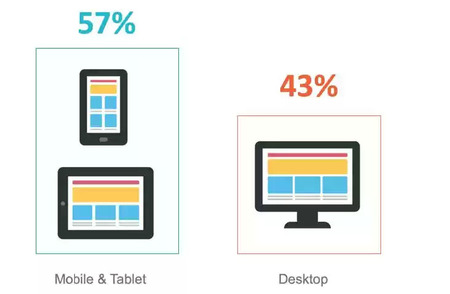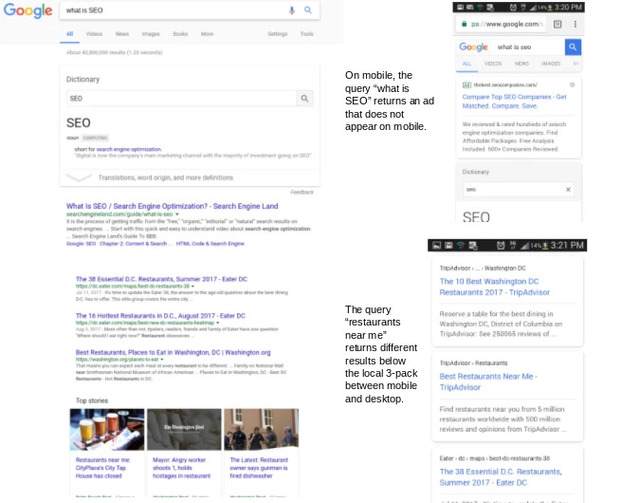Since mid-2015, when Google first announced that mobile search had overtaken desktop in the United States and a few other countries, mobile growth has drawn attention from brands across the board. This announcement occurred around the same time as Google’s announcement of the April 2015 mobile SERP algo change, which rewarded mobile-optimized sites and thereby penalized unoptimized sites.
BrightEdge Latest Research on the Mobile SERP
At BrightEdge, we conduct research to help our clients and the industry remain abreast of these changes and challenges within the digital ecosystem. The better people understand how customers use their mobile devices and what they expect to see when interacting in the digital space, the easier it is to meet these expectations. We researched the behavior of mobile users as well as how the SERP differs between mobile and desktop.

Some of our key findings included:
- 57 percent of traffic now comes from mobile and tablet search
- 79 percent of keywords overall change in rank between mobile and desktop
- 47 percent of keywords in positions 1-20 rank differently between mobile and desktop
- 35 percent of the time the first page that ranks for a domain on a query differs between mobile and desktop

What the Latest Mobile SERP Research Means for Marketers
It is clear from the information taken from our research that a fundamental shift must take place for marketers. Instead of creating websites for desktop users and then ensuring that those websites are "compatible" with mobile devices, some of the website content should be created and optimized for mobile users first.
When this shift takes places for marketers, they will find that mobile optimization strategies for users will come more naturally. They will need to start performing mobile-specific keyword research and tracking to better understand the phrasing that mobile users employ when making queries.
"Mobile traffic is huge for us and our industry — above the 57% BrightEdge is reporting. We are developing content with a mobile-first perspective to connect with our users with info, use advice, and reviews – especially when they are near a store where they can easily purchase."
Carlos Spallarossa, Director of SEO, L'Oréal
Brands also need to design websites that will be friendly for mobile users, including the navigation menus, the style of content -- some videos, for example, do not play on mobile devices, and even basic functions like buttons should be built with mobile, and their touchscreens, in mind.
The continued growth of mobile means that brands cannot overlook the importance of their on-the-go users. The impending mobile-first algorithm from Google is only one sign of these rapid changes. Our BrightEdge research on the mobile SERP and usage clearly demonstrates that the time for a mobile-first mentality is now.
Access BrightEdge's full list of how to improve mobile planning and results by reading the full report.


